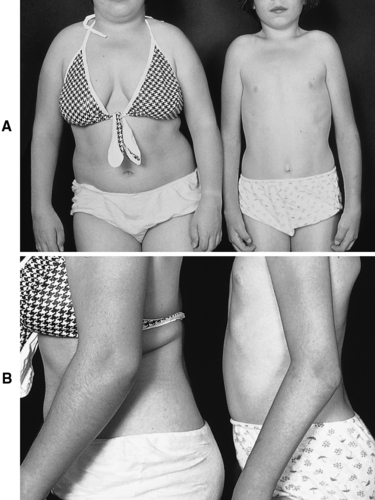8. Arthrogryposis
Definition
Arthrogryposis is a nonprogressive condition that is obvious at birth by the characteristic multiple joint contractures that occur throughout the body. The disorder is also known as arthrogryposis multiplex congenita.
Incidence
The incidence of arthrogryposis is about 1:3000 live births without racial or gender preference.
Causes of Fetal Akinesia
• Attempted pregnancy termination
• Carbon monoxide poisoning or severe hypoxia during pregnancy
• Chronic amniotic fluid leak
• Demise of a twin
• Infants of mothers with myotonic dystrophy, myasthenia gravis, multiple sclerosis
• Large uterine fibroids or tumors
• Maternal fever >39° C (>102.2° F) for an extended time
• Maternal hyperthermia
• Maternal infections (rubella, rubeola, coxsackievirus, enterovirus, or Akabane)
• Multiple fetuses
• Oligohydramnios
• Severe hypotension at a critical time
• Teratogens (drugs, alcohol, curare, methocarbamol, phenytoin)
Etiology
The underlying cause of arthrogryposis is fetal akinesia. Fetal abnormalities—such as neurogenia, muscular or connective tissue disorders, limitations to mechanical movement—or maternal disorders—such as infections, substance abuse, trauma, or maternal illness—may be the cause of fetal akinesia. Fetal akinesia results in development of excess connective tissue around the joint. The joint becomes fixed and the limited movement within the uterus further exacerbates the joint contracture.
 |
| Arthrogryposis. A, Two sisters with the generalized form of the disorder. Note the stiff posture and tubular appearance of the limbs. Motion of all joints is limited as a result of failure in the development of or degeneration of muscular structures. Their stature is short. B, The lateral view highlights the flexion of contractures of the elbows. |







